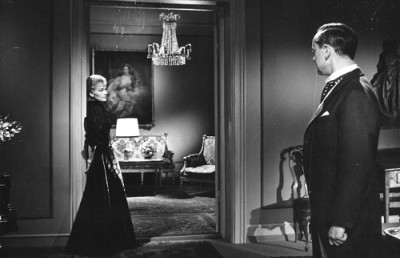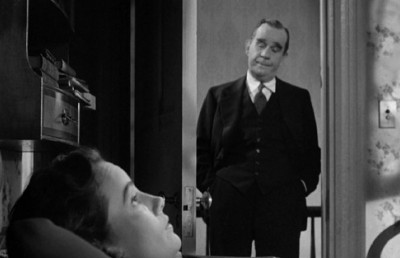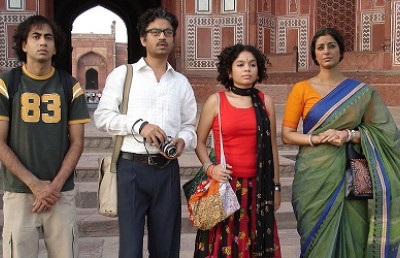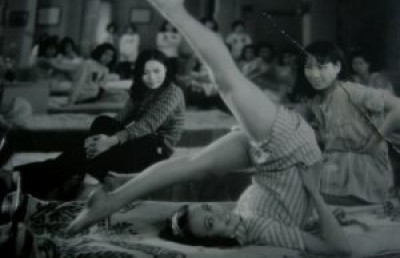The Forestmaker: Reportage, Poetry, and Advocacy
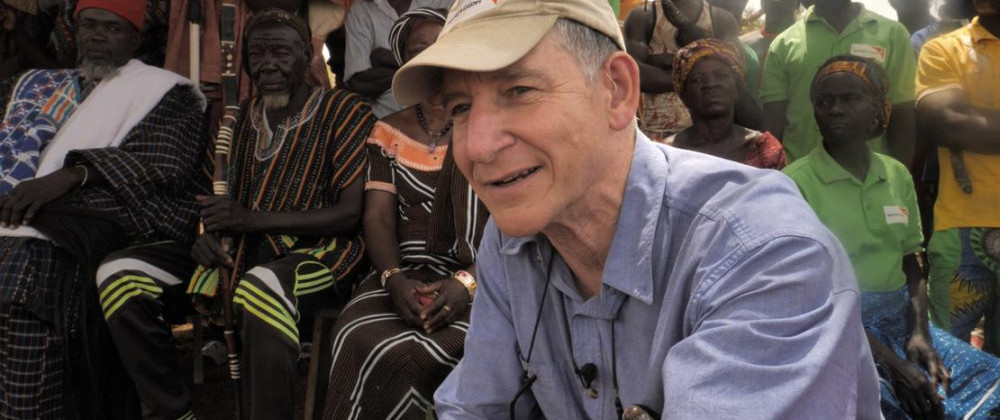
The Forestmaker introduces its audience into the social and environmental activist world of Tony Rinaudo, an Australian agronomist, who over the past four decades has achieved impressive success restoring arid, desolate areas of Africa to usable farmland.
In 2018 Rinaudo caught the interest of German filmmaker Volker Schlöndorff and his story motivated the German filmmaker to produce and direct a documentary about this unique visionary’s life and work. Schlöndorff’s film is, of course, particularly engaging in a time when concern and even panic about climate change command world attention. In his “film-essay” Schlöndorff is concerned about environmental issues without being demoralized or despairing and he remains optimistic about the future without being complacent.
The Forestmaker works as a narrative showing Rinaudo’s early involvement in African agriculture, his failures and successes, and his creation of a functioning, economically feasible, and practical method for reversing the increasing desertification of vast miles of the African Sahel, that area between the Sahara Desert and the greener, more southern parts of the continent. This analysis will note how the film operates on two different levels. The first is a narrative and didactic level, and the film succeeds as a conventional, journalistic documentary. The second is more implicit: a subconscious and poetic level of association, metaphors, and intuition, one which creates much more of a tone of personal intimacy as it addresses themes of loss, abandonment, and spirituality.
The film begins with a two-and-a-half-minute prologue that we will discuss when we deal with its poetic aspects. The director then gives voice to native Africans who have worked jointly with the Australian scientists to achieve changes in their agriculture environments and their economy. We see documentary footage of Rinaudo returning to Niger decades after his work there. He is warmly greeted by friends and associates. Schlöndorff lets us hear about Rinaudo’s earlier successes via the mouths of people who have enjoyed their benefits. Rinaudo impresses us by his fluency in the native Hausa language while he smiles, jokes, and laughs with his hosts.
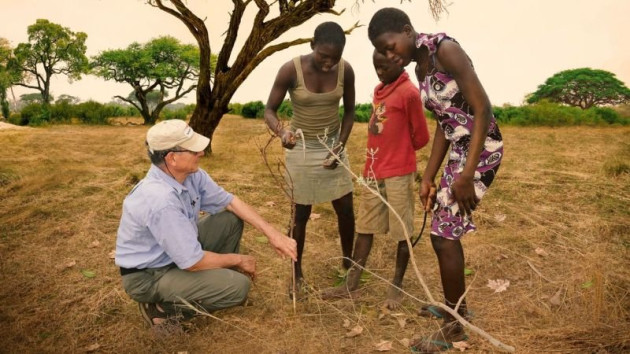
The closely following episode about an amputee epitomizes a problem central to both Rinaudo’s efforts and Schlöndorff’s: the balancing act between preserving the good parts of traditional culture while integrating into them practices which will lead to authentic progress and improved quality of life. One must show acceptance of and respect for native cultures and folkways while countering those beliefs that are specifically dysfunctional or harmful. Years earlier, Rinaudo had encouraged the man to have a gangrenous calf amputated. This was despite the prevalent ethnic cultural bias against cripples. Despite the man’s fear of shame and rejection, the operation saved his life, and he expresses his gratitude to Rinaudo. The amputee had become a spokesperson for Rinaudo’s innovations and has experienced their good effects. This teamwork between the Australian outsider and the energetic native becomes a smaller-scale model for what such intercultural success can look like. The filmmaker appears to purpose his documentary along the same lines, stating: “I wanted to describe their daily lives, trying to understand their minds and beliefs, and ultimately to show a different image of Africa, without the usual condescending attention to misery and catastrophe.”
In the section that follows, entitled “The Calling,” the filmmaker shows us photographs from Rinaudo’s youth and his early years in Niger, including one of the inspirations for his professional future. The young Rinaudo happened upon two books by Richard St. Barbe Baker, a mid-20th century champion of reforestation. Schlöndorff displays a page showing portions of the following passage underlined: “When the forests go, the waters go, the fish and game go, crops go, herds and flocks go, fertility departs. Then the age-old phantoms appear, stealthily, one after another — Flood, Drought, Fire, Famine, Pestilence.” This is the second time the audience sees these words; Schlöndorff had previously used them as an epigram to the film.
We will see in future sequences the need for hybridity between traditional wisdom and foreign innovation. For instance, the black-and-white archival footage that follows depicts the wholesale clearing of areas for colonial agriculture. Land is bulldozed. Trees are felled and uprooted. A line of native workers hoes the ground. Mournful music plays, underscoring a regrettable loss of fertile land destined to become a dust bowl. Harmful adoption of European and American agrobusiness models has damaged both the environment and the societal structure in the Sahel. At the same time, family farms can no longer exist just to provide for the needs of family members; they require a network of western-style markets to ensure an exchange of goods which will benefit the farm families as well as establish the essential larger trading system. The principle, illustrated by The Forestmaker, could be applied to all of Africa.
To portray Rinaudo’s next — and most significant —development as an agronomist, the documentary shows, presumably from archival footage, a significantly younger Rinaudo driving across the arid landscape in a pick-up truck and follows this with an animated sequence that is preceded by the heading “The Underground Forest.” This reenacts the moment when Rinaudo, demoralized by the dry sand all around him, realizes that one green bush near him is not really a bush but rather a tree sprouting from an underground root system. The resulting epiphany inspires Rinaudo to abandon his previous plan to plant tree seedlings and to pursue instead a strategy of pruning the outgrowth in a way that would encourage the native trees to grow again.
From this point The Forestmaker presents us with a series of progressions and reversals which nonetheless have resulted in a steady improvement of the local environment. Following the major famine of 1984-85, there is a concerted effort, called “The Green Wall,” to replant trees across the whole desert Sahel. This massively expensive and unsuccessful endeavor later leads to a broader acceptance of Rinaudo’s alternative approach. The practice of burning woodlands to produce marketable charcoal, however, undermines the reforestation effort. Positive steps include the collection and distribution of a wide variety of tree seeds as well the putting up of fences to preserve green areas from overgrazing by livestock. But these efforts are thwarted by the move from planting millet to planting corn that requires expensive fertilization, as well as by water shortages, and by trespassing herders. On an informative and rhetorical level, then, The Forestmaker presents a convincing case for Africa’s Sahel region using and promoting Rinaudo’s methodology of farmer-managed natural regeneration (FMNR). The movie holds the viewer’s interest by structuring its storytelling as a progression of triumphs followed by disappointments, and of solutions followed by new problems. The alternating of positive and negative developments creates enough suspense to keep the viewer engaged.
Added on to this practical, socially engaged, issue-focused approach is a powerful undercurrent of instinctive, affect-oriented, almost lyrical responses to the same subject matter. The prologue introduces this aesthetic level. It relates an African legend about the beginnings of humanity. A strong feminine presence infuses the sounds and images. The narration, spoken by Angela Winkler (seen in the 1970s in Schlöndorff’s The Lost Honor of Katharina Blum and The Tin Drum), avoids the classic convention of the deep-voiced male narrator. The first images are of a woman walking through a field. Reversing the biblicals Adam-first, then-Eve progression, the story describes her being joined by a male partner who later goes to fetch water to wash menstrual blood that she takes to be a wound. The story juxtaposes the discovery of botanical seeds with human pregnancy, and the child resultant from this analogy is a girl.
The prologue previews the strong roles women will play as the movie progresses. The Forestmaker addresses gender issues when it describes husbands abandoning women and their children who are forced to maintain farming. The social phenomenon of African men leaving their wives and children for work in the city creates an association of the absent male with urbanization, technology, and post-colonial exploitation. Women, by contrast, become a link to agriculture, fecundity, nature, and spiritual life. If the colonialist imposition of European and American agricultural practices resulted in the devastation of the African landscape, the absent men appear as if complicit in these harmful developments. As the movie progresses, the women, though proud of their accomplishments in maintaining the homestead, seem to become more and more frustrated with their absent husbands and fathers.
Schlöndorff apparently encouraged several local media artists to participate in The Forestmaker by contributing short segments identified as separate films in themselves. The first of these, called “The Tears of Immigration,” by Alessan Diago, also emphasizes women who have grown up with absent fathers and whose own husbands may be off in the city. These women function as synecdochic stand-ins for the African countries they inhabit. They are abandoned descendants of the colonial powers and the tone of this section is much more intimate and personal than many of the surrounding episodes.
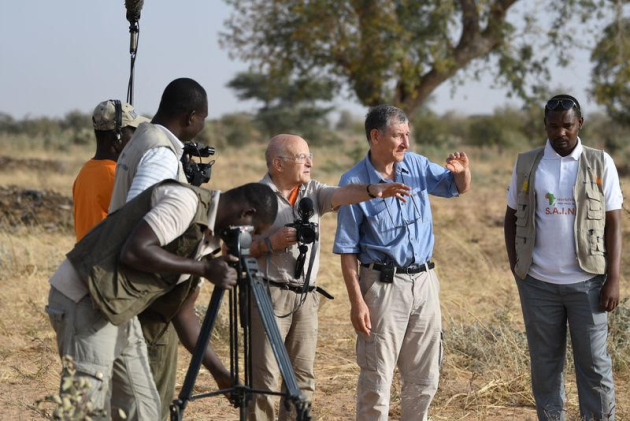
Volker Schlöndorff with Rinaudo
On a metaphoric level, then, Rinaudo becomes a kind of returning father or husband and an enemy of colonialism, as well. In one scene, we see him adopt a grandfatherly role as he teaches a child the proper method of pruning. At the same time, he later shows himself to be willing to be taught by a former student who explains his reasons for doing his pruning in a slightly different way. Rinaudo good-heartedly responds: “Good. Excellent. You are the teacher. I am unemployed . . . Because you guys have taken over.”
Rinaudo also brings the opposite of colonial exploitation; he brings hope and the possibility of a future as seen in the scene with the amputee. We will discuss later two teachers who returned from the city to farming and teaching children and the community; the teachers appear like an early realization of this future.
Stylistically this information-oriented narrative side of The Forestmaker is relatively conventional, although the director has cited Chris Marker’s loosely structured Letter from Siberia (1957) as a model he had in mind (“Volker Schlöndorff, Director of _The Forest Maker_”) . Schlöndorff uses voice-overs to bridge sections of archival footage, spontaneously recorded interaction, animated sections, and short film inserts by African colleagues. Schlöndorff sets off the archival footage and the short colleague-directed films by changing the screen format to 4:3 and putting a graphic white band as a frame around the image. Throughout the presentation, he shows no hesitation to include images of himself and his crew making the documentary. He will sometimes himself perform the voice-overs, but the movie works from a principle that we only hear the commentary of people we also see. The one exception is the prologue; otherwise there is no authoritative voice-of-God narration.
A key scene of the film’s affect-oriented, lyrical level is the previously discussed animated sequence in which Rinaudo sees the isolated bush, realizes it is a tree, whereupon he develops a plan to nurture it back to above-ground life and growth. The physical construction of this episode expresses in graphic form the concerns and themes of the movie. The horizontal line of the arid desert contrasts to the vertical figure of the animated Rinaudo stretching up tall with hands splayed tree-like in joy and celebration.
This moment incorporates a spiritual dimension. Rinaudo looks around at the arid vastness on every side and begins to despair at the futility of his current tree planting efforts. He offers what he calls a silent prayer and is immediately drawn to the bush — almost analogous to Moses’s burning bush — that will inspire him. This sequence stands in an interesting formal comparison to the movie’s prologue. The latter starts with the figure of Cecilia Topoc Saparoug, who will later take an important role in the movie’s discourse, moving left to right across the frame followed by a shot with the camera directly behind her, moving along with her. The prologue reaches its dramatic climax in a deliberate movement of the man and woman moving slowly in an eerie nighttime darkness right to left across the frame. This is followed by an extremely quick shot, in bright sunlight, of the couple going left to right. The left-to-right images suggest the woman, and later the couple, venturing out into the world. The right-to-left image implies the couple approaching a spiritual dimension. In the animation sequence, one is struck by repeated right-to-left movements. First Rinaudo’s truck enters the frame from the right. We see fuzzily in the distance a man and woman hauling an ox-drawn cart carrying wood, moving right to left. This is followed by a forlorn-looking goat who is again entering from the right. These movements imply a kind of returning home which links to the notion of spiritual revelation. Moving right comes to suggest engagements in the material world; the movement left is toward spiritual reflection.
There follows a visualization of the underground world of roots which Rinaudo imagines, another spiritual facet. This morphs into an almost surrealist image of an upside-down forest growing under the earth as a kind of mirror image of the trees that should be growing above the surface. After a discussion of how scientists from the Middle Ages on have seen roots in plants as analogous to the heads and brains of humans and animals, philosopher Emanuel Coccia in The Life of Plants describes this ability of roots to stimulate the visual imagination:
The roots make the soil and the subterranean world a space of spiritual communication. . . . Thanks to them, then, the most solid part of the earth is transformed into an enormous planetary brain through which matter circulates, along with information on the identity and state of the organism that populate the surrounding environment. . . . Intelligence, thanks to roots, exists in mineral form, in a world without sun and without movement (80).
Schlöndorff’s film almost personifies or gives a soul to the roots and the trees they represent.
Schlöndorff returns to the level of spirituality near the end of the film. We see Africans participating in a Christian service; the connection to the rest of the film is not explicit, although we have seen in an earlier sequence Cecilia Topoc Saparoug and her son praying with clear conviction. This earlier sequence notably ends with a glowing shot of the moon, an echo of a similar shot in the prologue. Schlöndorff never directly addresses Rinaudo’s religious convictions. Rinaudo and his wife ventured into Niger as missionaries with the interdenominational and evangelical group Serving in Mission and have maintained connections to Christian organizations (Dieterich, 53). Although The Forestmaker clearly wants to avoid proselytizing, it nonetheless contains a strong undercurrent of interest in spirituality. Spirituality becomes associated with the land, the natural world, ecological conservation, motherhood, community, and belief in the future.
In two sequences, the prologue and the first animation, the movie’s action is staged rather than caught in a spontaneous documentary manner. This also applies to the shorter animated film by D’Idris Diabaté whose title “Éloge des Mils” translates as “In Praise of Millet.” In a series of brief sequences, Diabaté illustrates the harvests of grains specific to main geographic regions of the world: wheat for Europe, rice for Asia, corn for the Americas, and millet for Africa. In all, the animated figures move from left to right which becomes the direction associated with material progress rather than spiritual reflection. The documentary sequence that follows laments the abandonment of millet cultivation in the name of so-called progress in favor of corn which is much less suited for African growing conditions and traditions. Millet joins the women, children, and trees in this abandonment.
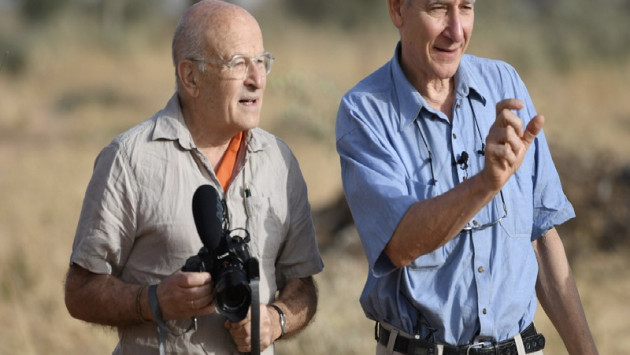
Volker Schlöndorff with Rinaudo
Just before the concluding ceremony in the Christian church which is introduced by the title “Epilogue,” we see the most mysterious and ambiguous sections of the film. Schlöndorff separately interviews two teachers. One walked away from a career as a teacher in the city to serve his home community. The second expressly returns to being a country farmer. This second teacher describes the ridicule he has received from that choice but both of them assure us that they are happy with their decisions. We see the second one teaching his children by candlelight at night as a storm begins to develop. He has chosen to maintain agrarian traditions while still making sure his children are educated and ready for the future. He would appear to embody the values of the filmmaker and Rinaudo in his embracing both traditional agriculture and the value of education. But as the scene progresses there is a mood of uncertainty. We see darkness punctuated by flashes of lightning.
We hear the pouring of rain, which should be welcome but somehow feels threatening. Pensive music plays underneath. Schlöndorff, who at one point tells the children they have a good father, seemingly approves of the man’s choices even while he acknowledges poetically the discomfort they may produce. The darkness of the scene recalls the darkness in the prologue which accompanies the primordial couple’s journey.
From an art historical perspective, one can see The Forestmaker as an extension of two trends in 19th century painting. The first is the broad appeal of landscape painting which emerged in part as a response to the threats posed to the natural world by the industrial revolution. Noteworthy throughout The Forestmaker is Schlöndorff’s use of expansive drone shots of the African landscape. These sometimes feel like terse summaries of what we have seen and become points of punctuation and transition between sections. They also, however, are simply images of great beauty. Like their nineteenth-century counterparts, they glorify threatened nature even while they may also celebrate its partial restoration.
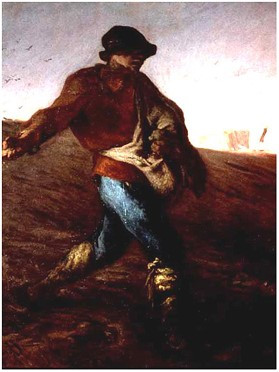
Jean-François Millet, The Sower, 1850
The second trend involves the making of manual labor into an appropriate subject for art. This is seen in celebrated works like Gustave Courbet’s The Stone Breakers (1849) and Jean-Francois Millet’s The Gleaners (1857). Schlöndorff links the celebration of manual labor to his admiration for the women who have taken over the agricultural sector. In one sequence, we see women pounding grain with huge wide poles. The women joke with the filmmakers about its being women’s work but there is also a tone of derision toward the men who are not there to help. The women are proud of their strength and self-sufficiency, but also aware of their difficult lot. We repeatedly see images of women carrying especially scarce water, which adds an additional charge after our having heard about the man in the prologue carrying water for his wife. Schlöndorff dedicates an extended section of more than six minutes to Cecilia Topoc Saparoug. She is the very person the filmmaker recorded walking through a field from left to right at the outset of the prologue. She is also the person praying with her son. She is associated with millet, regenerative agriculture, and environmentalism. She shows basic entrepreneurship by selling homemade fried millet cakes one day a week. In the cast list, the filmmaker assigns credit to her. Within The Forestmaker, Schlöndorff nestles a small portrait of this woman to be admired for her determination, her tenacity, her calm, her belief in education, and her faith. She says:” God taught us that he will take care of us in all things.”
The Forestmaker is about a region of Africa, not about a single country. Sections of it were shot in Senegal, Mali, Burkina Faso, Ghana, Niger, and Ethiopia. As a result, the movie is a pleasing jumble of spoken languages and subtitles. Rinaudo switches between his distinctive Australian English and the native idiom. Schlöndorff, on his part, alternates German, English and French. The epigram from Richard St. Barbe Baker that starts the film is printed in the original English even in the movie’s German version where the subtitles and titles of sections are correspondingly presented in German. Conversely, in the English-language version both are rendered in English and Schlöndorff has rerecorded his voice-over commentary in English, as well. In this respect, the movie is an exemplar of modern globalization. A comparable musical pluralism emerges on the soundtrack. Bruno Coulais’s score jumps from style to style alternating ethnic-sounding instruments and motifs with more traditional European sounding passages. Orchestrations are light and the music is rarely intrusive. One strangely evocative, yet subtle, use of music occurs, following a brief insert of a town center viewed with Moslem chanting accompanying the image. The filmmaker continues the chanting well into the next scene, one showing a government official talking about reforestation and tree-planting. Any connection between the music and the image must be on an instinctive level.
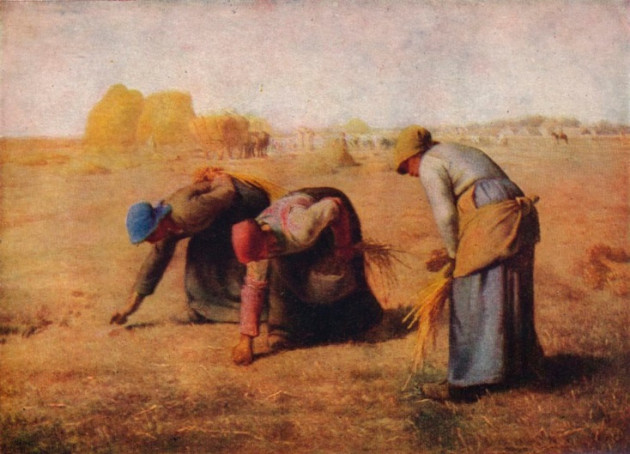
Jean-François Millet, The Gleaners, 1857
One may ask here where The Forestmaker fits into Volker Schlöndorff’s oeuvre as well as into the trajectory of other New German Cinema directors as they produce their late-career works. Schlöndorff has engaged with documentary before as in his portraits of the actress and dancer Valeska Geert (Just for Fun, Just for Play —Kaleidoscope Valeska Geert, 1977), the late German politician Franz-Josef Strauss (The Candidate, 1980), and the Austrian-American Hollywood filmmaker Billy Wilder (Billy, How Did You Do It? 1992). The Candidate was made in collaboration with other filmmakers as were Schlöndorff’s contributions to the omnibus films Germany in Autumn (1978) and War and Peace (1983). The move toward documentary has been characteristic of several of Schlöndorff’s New German Cinema colleagues such as Wim Wenders, Werner Herzog, Michael Verhoeven and Margarethe von Trotta. Engagement with African subject matter has cropped up in the German film world with Caroline Link’s 2001 fiction film Nowhere in Africa, the 2003 Oscar winner as best foreign production. Wim Wenders has shared with Schlöndorff, whose The Ninth Day (2004) directly addresses the life of a priest during WW II, an emerging interest in spiritual themes, as in Submergence (2017) and Pope Francis —A Man of His Word (2018) (“Behind the Scenes”).
Schlöndorff has not been averse to reference his movie as “propaganda,” but one might argue with this label (“Director’s Note.”) There is a lack of agitation and emotional militancy. There is an acknowledgement of contradiction and uncertainty. In a late sequence, we see a grade-school teacher ask how many of his students want to become teachers. All raise their hands. He asks how many want to become farmers. None raise their hands. Similarly, all identify themselves as wanting to live in the city rather than the country, the exact opposite of what two of their teachers have done. There is an irony here: in earlier scenes we have seen mothers passionate to give their children education but if no one wants to work the farm, what kind of future will there be? Schlöndorff implies that Rinaudo’s efforts could have very little effect if young people chose not to go into farming or the trend toward planting corn rather than millet continues. The director seems to strive for journalistic objectivity. This makes the parallel, more poetic level of the piece even more interesting. In addition to being a reportage, a feature story, as it were, about a figure whose timely relevance has come into focus, it is a story about various memories — of oppressive and small-minded colonialism, of remembered fathers and sons gone missing in the city, of a land of fecundity and forests laid waste by agrobusiness. Recording awareness of a path forward, Schlöndorff maintains a tone of optimism here, one that has been present in some of his previous work. A Gathering of Old Men (1987), for example, showed an American South overcoming racial prejudice. Similarly, Diplomacy (2014) had its end celebrate the creation of a post-Nazi unified Western Europe. As in these earlier works, Schlöndorff in The Forestmaker avoids the cynicism and skepticism characterizing much current discourse, even while he faces both global and continent-specific environmental uncertainty.
WORKS CITED
“Behind the Scenes,” Submergence, directed by Wim Wenders. Sony Pictures/Samuel Goldwyn Films, 2017. DVD.
Dieterich, Johannes, ed. Tony Rinaudo: The Forest-Maker. Zurich: Rüffer and Rub Visionaries, 2018.
Coccia, Emanuele. The Life of Plants. Trans. Dylan J. Montonari. Medford, MA: Polity Press, 2019.
Rübel, Jan. “ Der Waldmacher und sein Regisseur.” Interview mit Volker Schlöndorff und Tony Rinaudo. https://www.weltohnehunger.or/beitrag-lesen/doppelinterview-der-waldmacher-und sein regisseur.html sein regisseur.html. p.5 of 14. Captured 12/30/2021
Schlöndorff, Volker. “Director’s Note.” Waldmacher The Forestmaker. Info Sheet_email. Unpublished press materials sent in a personal communication to the authors January 20, 2022.
_____. “Volker Schlöndorff • Director of The Forest Maker.” Interview with Camillo De Marco. Cineuropa. https://www.cineuropa.org/en/interview/423886/. Captured 5/14/2022
“The Forest Underground: Hope for a Planet in Crisis.” St. Paul’s Cathedral, Melbourne, Australia. https://cathedral.org.au/2021/09/01/the-forest-underground-hope-for-a-planet-in-crisis-with-tony-rinaudo/. Captured 2/27/2022.
“The Forest Underground by Tony Rinaudo.” Greensboro Christian Book Center. https://www.gcbc.net.au/post/the-forest-underground-by-tony-rinaudo. Captured 2/27/2022.


